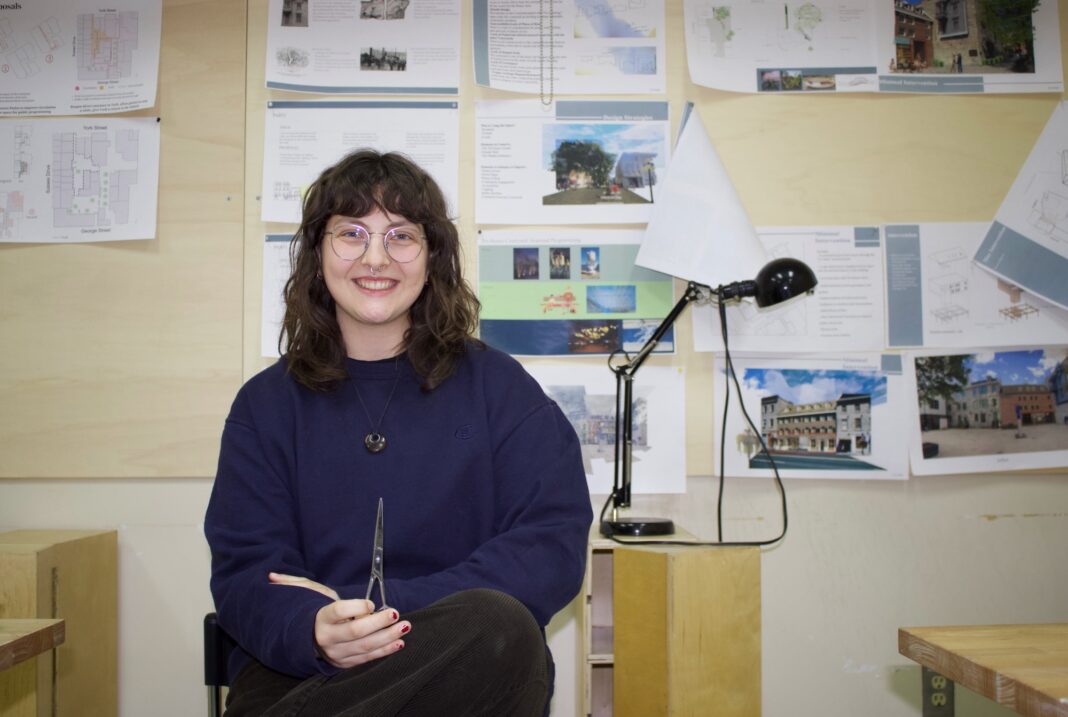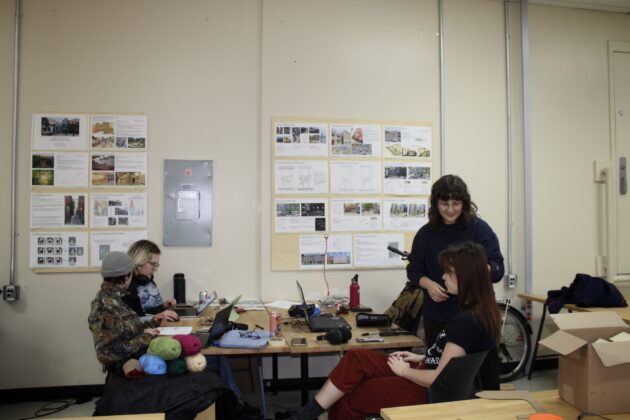Kate Giles, a third-year architecture student at Carleton University, runs a haircutting business out of Carleton’s architecture building and their home.
Giles started cutting hair during the COVID-19 pandemic when hair salons were closed, and now has expanded to cutting friends’ and students’ hair.
The Charlatan sat down with Giles to learn more about the philosophy behind their business and how they’re making haircuts more inclusive and affordable.
The Charlatan (TC): How did you first get into haircutting?
Kate Giles (KG): I was first cutting hair for my brother over the pandemic. Our mom is immunocompromised, so we couldn’t really go to the hairdresser even when it was allowed. I was cutting my own hair and my brother’s hair and some other family members over that summer.
TC: How did your haircutting business expand once you got to university?
KG: When I moved to Carleton, I was cutting hair for my friends. The first haircut I did was for my friend Milena, because they went to a salon and wanted a shorter, typical guys’ cut and [the hairdresser] said they wouldn’t do it.
I wanted to give people haircuts that reflected their gender identity and also make them feel more comfortable because going to the hairdresser seems to be a bad vibe for a lot of people who are queer, and also have sensory issues, and anxiety.
TC: How do you cut hair?
KG: I do dry haircuts because I find it’s easier cutting people’s hair when there’s texture there, like curly hair. I personally have textured hair so when I cut it, I want to be able to see how it will be when it’s dry. When getting wet cuts, I felt like often my hair would shrink up a lot more than I wanted it to.
TC: How do you make your haircuts inclusive?
KG: I feel like a lot of hairdressers are older and they don’t have the knowledge that a lot of people our age do about the 2SLGBTQ+ community. [Other hairdressers] don’t understand how physical expression of gender identity is really important to some people. They’ll often be like, ‘Oh, we won’t do that haircut, it’s for boys.’ I bring in inclusivity by cutting people’s hair the way they want it, regardless of who that haircut would typically be seen on. I just want to make my clients feel comfortable, and help them express themselves and their identity.
TC: How do you make your haircuts affordable?
KG: I charge $15 or $20 just depending on how drastic the haircut is and based on how much time it’ll take me. Usually, I’m cutting hair between 30 minutes to an hour. It’s pretty fast since I’m not doing the whole wash and a lot of people appreciate that because I know myself and others have a hard time sitting still for that long.
TC: Do you have a favourite haircut to give people?
KG: I love to do shag haircuts on people because I feel like it’s a haircut that’s really affiliated with the community of people whose hair I’m cutting. They’re looking for something edgy, something alternative and I feel like it really suits a lot of people.
TC: Do you have a philosophy behind your business?
KG: Allowing for a space for haircutting to be different. Taking it out of the salon and making it more geared towards student needs, in terms of affordability and in terms of giving them the haircuts they want, and really listening to them. If clients want to listen to music, I have a speaker. If they want to watch a show, I have my TV set up at my house. Just making it a more comfortable experience for the client and keeping inclusivity in mind while I’m cutting hair.
TC: Do you think your architecture and artsy background impacts your business?
KG: Yeah, definitely. I apply a lot of what I know about the principles of art to my business, and also the elements of art. I’m thinking about line, shape, texture, form — all that shebang. As I’m cutting hair, I’m thinking about it almost in a modelling and sculpting way.
TC: Where does your inspiration for certain haircuts come from?
KG: All the inspiration honestly comes from the client. At the end of the day, I’m there to make the client happy and I want them to feel good about their hair. My inspiration comes from how they describe to me what they want from their haircut, and also the pictures that they show me.
TC: Do you have any tips for other students who are trying to run a business?
KG: I would just say pick something that is connected to areas of interest for you. I think a good example would be if you really like to be active you could do a dog walking business. It’s just choosing something that you would do for fun to do as a business as well. Any sort of side business should be a positive supplementary activity to what you already have going on.
Giles can be reached on Instagram @kateggiles for affordable haircut inquiries.
This interview has been edited for clarity and length.
Featured image by Kyra Vellinga/the Charlatan.








